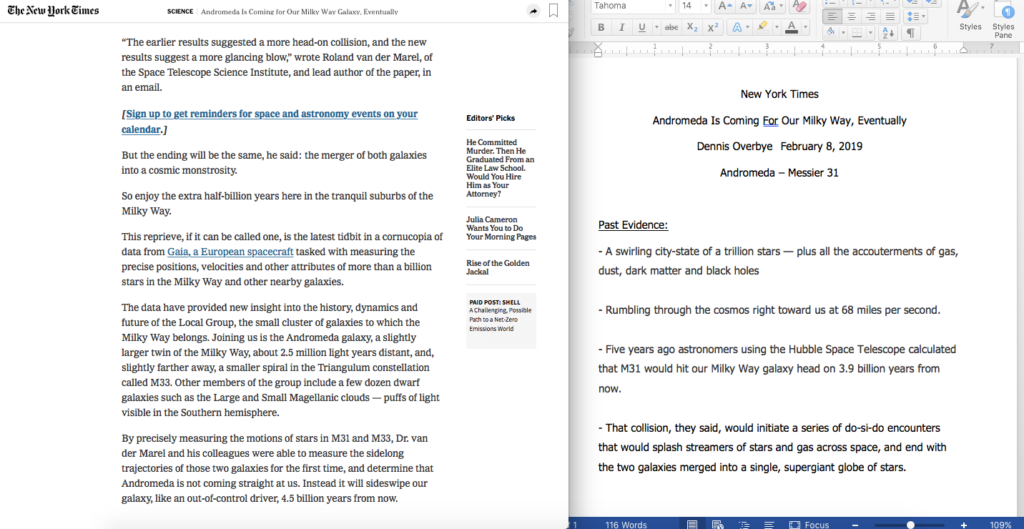Geetangalie’s Week #2 Response
The New York Times article, Andromeda is Coming for our Milky Way, Eventually, by Dennis Overbye published February 8, 2019, was created to inform readers about a new finding made by astronomers. The path and speed of the galaxy Andromeda, also known as Messier 31, has changed from their last findings. The former report had declared the galaxy would collide into the Milky Way in 3.9 billion years. Traveling at about 68 miles per second, the collision would end with the Milky Way and Andromeda conglomerating into a singular, enormous cosmic being. New data declares that Andromeda is actually moving a lot slower than expected, at only about 20 miles per second and sideways. This denoting it would take approximately 4.5 billion years to strike our galaxy, in turn also changing the path of Andromeda. At a faster speed, it could be assumed we would have had a harder, more direct hit. The galaxy’s decreased velocity would make the encounter a subtler clash.
This article contains a video attachment from 2014 in which the previous data found through the Hubble Space Telescope had shown scientist the Andromeda galaxy, made of a trillion stars, would have a head-on collision with the Milky Way galaxy. The video gives a visual representation of how the collision would look to a faraway onlooker. Also, there is an insight into what specifically would happen to the earth and humans in the process of this collision. It is said before the collision would even occur human life would cease to exist from its sterilization by the sun. After the collision and many billion years, the two galaxies after intertwining will be able to assemble into one, large galaxy.
This video is vital to the article as it helps to explain a difficult to grasp the topic. A galaxy’s immense size makes interpreting its behavior hard. These extensive time periods between the actual collisions and how the collision will look are complex to comprehend. Although the video shows a totally different outcome from what will happen with the present data, it allows us to compare the two outcomes. The video also serves as a tool to exhibit the new path Andromeda will take by evaluating the video with the new data in mind.




